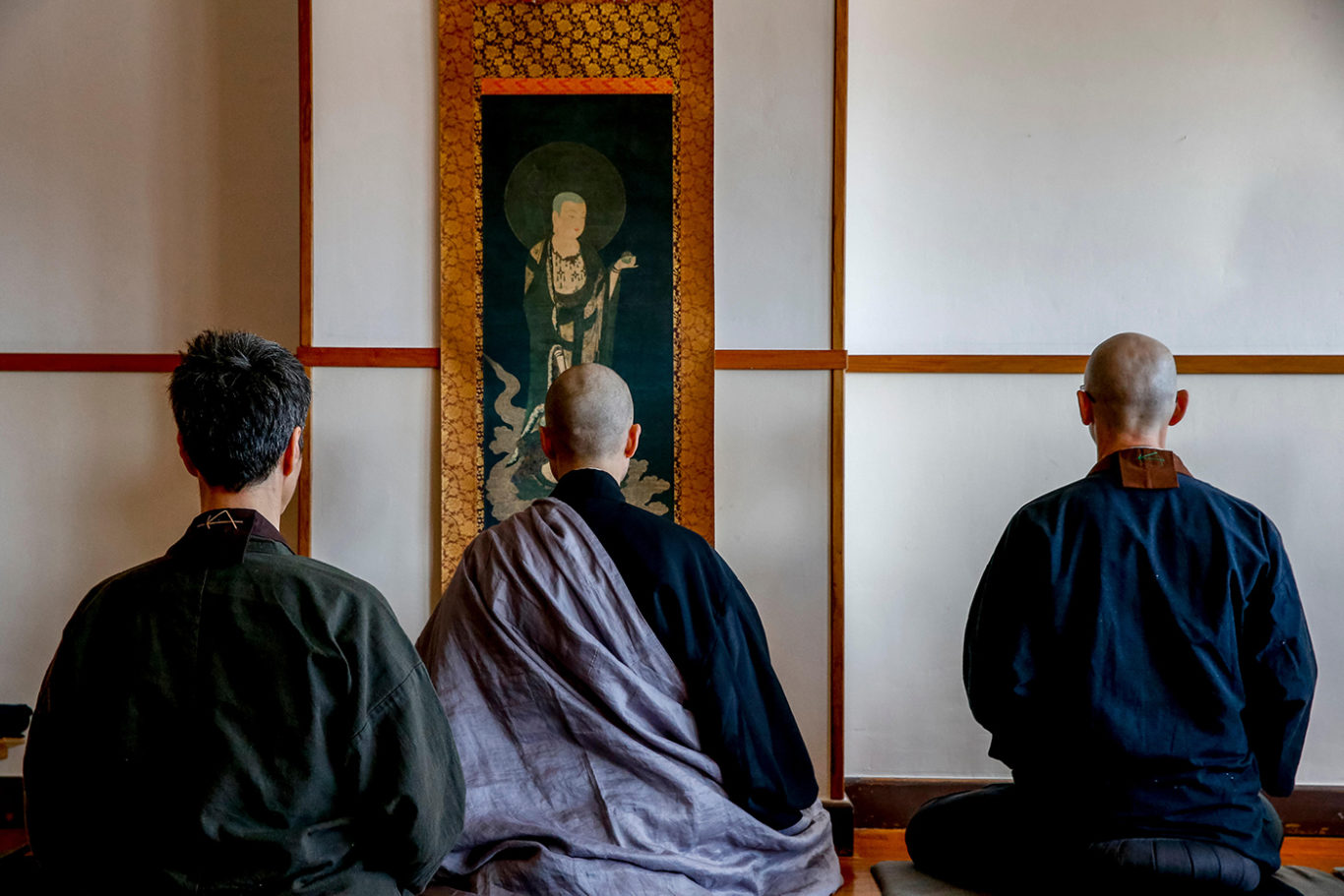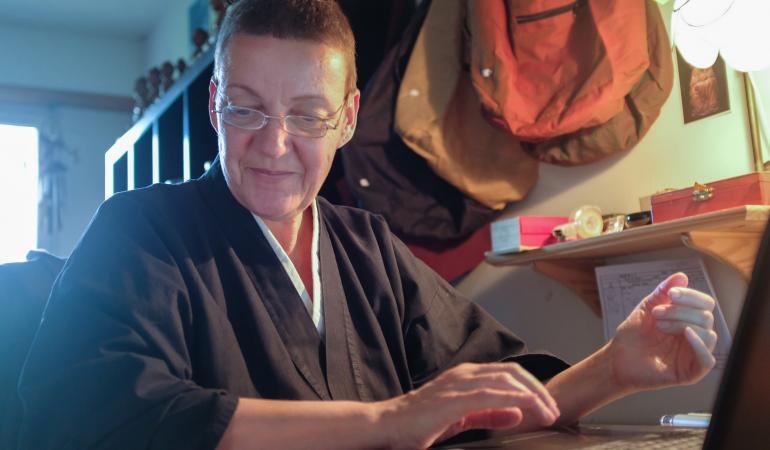Zen Buddhism
Zazen
Zazen, Sanzen, and Samu are three important factors in the Zen Monastery.
Before I decide which of the three I consider the greatest importance, I want to give a brief description of each of the three techniques in the Zen Monastery starting with Zazen.
 |
| Zazen |
Regarded as an insight to the nature of existence, the purpose of zazen for the meditator is to suspend any judgmental thinking and "completely focus his conscious on the existential reality of the moment, and stay with that" (Bresnan 496).
In Japanese, this technique is called shikantaza, as it allows the meditator to fully grasp the moment.
Sanzen
 |
| Sanzen |
In other words, Sanzen is a private interview between master and student.
In a Sanzen, a student would be let in to a roshi's room and after bowing deeply will await the roshi's questions to answer.
Arranged meetings often occur during the Zazen period, although it doesn't need to occur everyday as the meetings can be infrequent.
According to the Zen community, "it is believed that an experienced master can quickly and intuitively determine the state of mind of the student, and can thus recommend exactly the right thing for that person to be working on" (Bresnan 512).
Samu
Samu refers to the physical volunteer work of the Zen Monastery.
Works can include manual labor or other forms of useful work because in a Zen community, everybody "seek to be self-sufficient as it possibly can be" (Bresnan 512).
 |
| Samu |
Between Zazen, Sanzen, and Samu; the one I believe to be of the greatest importance would have to be Samu.
The reason for why I believe Samu is the most important is because the manual labor also helps protect the environment and the work is done for the good of the community.
Works Cited:
Bresnan, Patrick S. Awakening: An Introduction to the History of Eastern Thought, 6th ed.,
Routledge, 2018.
Hazy Moon Zen Center. "How to Meditate - Beginners Introduction to Zazen." Youtube, 10, Oct. 2010.
https://www.youtube.com/watch?v=dDJ_wbjBL6c. Accessed 29 November 2021.
“Meeting with a Teacher.” Bright Way Zen, 26 June 2021,
https://brightwayzen.org/practice/zen-teachers/meeting-with-a-teacher/. Accessed 29 November 2021.
“Practicing Samu.” Practicing Samu | Zen Meditation, https://meditation-zen.org/en/meditation-samu.
Accessed 29 November 2021.
“What Do Zen Buddhists Practice?” Buddhism for Beginners, 25 Apr. 2020.
https://tricycle.org/beginners/buddhism/what-do-zen-buddhists-practice/. Accessed 29 November 2021.

Comments
Post a Comment